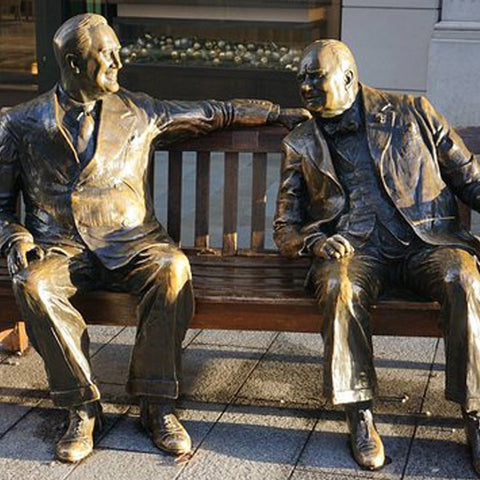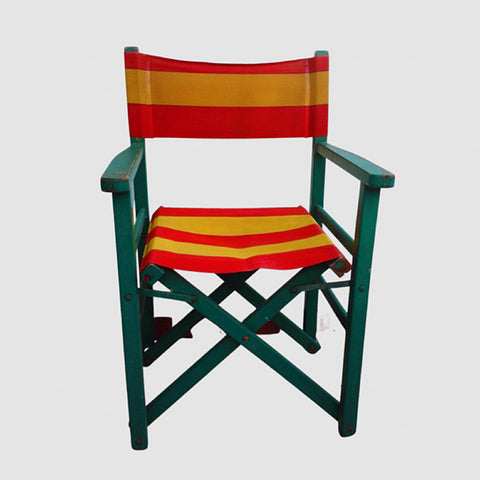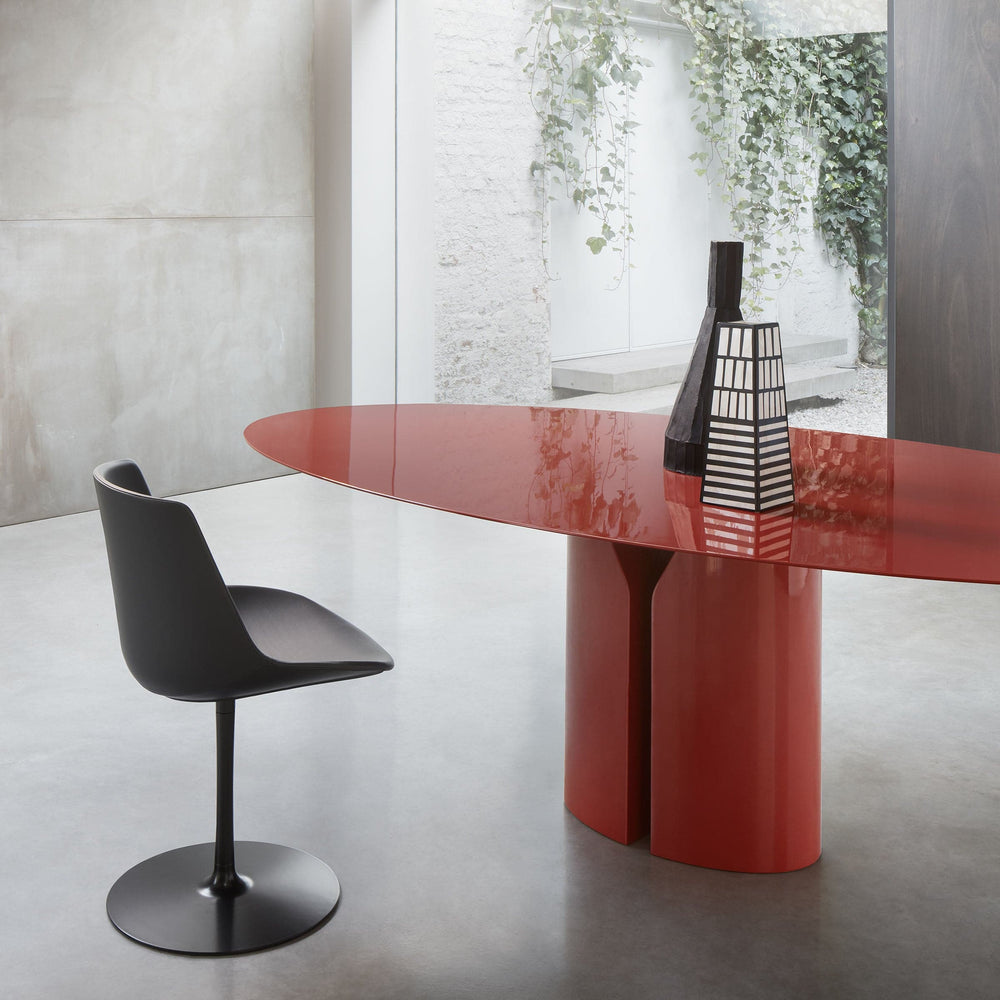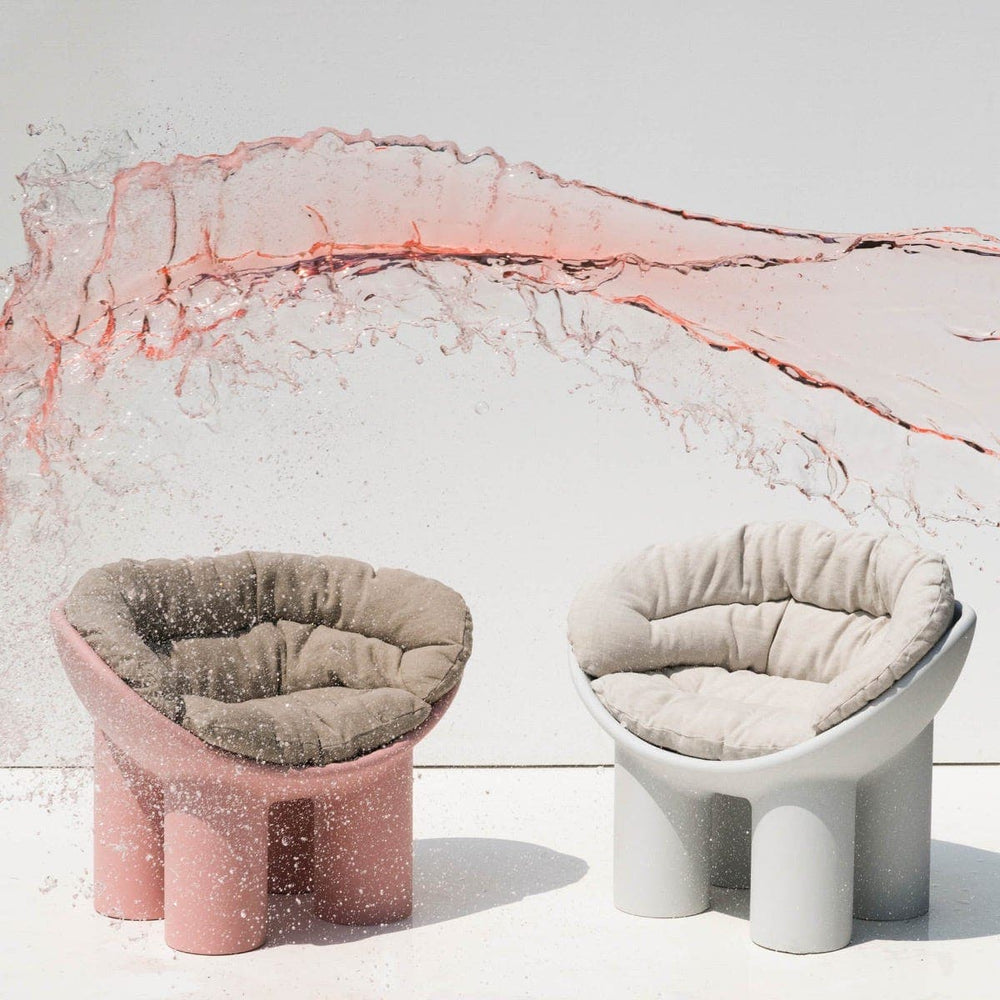CHAISES POUR UNE DÉTENTE ULTIME
La Liste #11
par Antonella Dedini

Le The List de ce mois célèbre le repos et la détente, surtout en plein air à l'approche de l'été.

Si relaxation avait une forme, laquelle serait-ce ? Ce serait définitivement plus sous la forme d'un fauteuil qu'un lit, qui est certainement pour se reposer mais qui a peu changé au fil des siècles.
S'inspirant de l'histoire du design et d'une richesse de sièges contemporains, nous voyons combien il existe vraiment de merveilleuses formes de confort. Et cela ne signifie pas simplement s'asseoir à table, à un bureau, ou dans le cour, mais dans des sièges conçus pour une période plus longue de repos et de détente de l'esprit et du corps.
De plage chaises longues pour bronzer et aller à la plage sans souci, à une nouvelle génération de chaises aux fonctions accrues grâce aux nouvelles technologies, jusqu'aux classiques comme le Fauteuil à bascule Thonet ou les iconiques chaises longues par des architectes et designers célèbres, ce mois-ci La Liste célèbre le repos et la détente, surtout en plein air à l'approche de l'été.
LA CHAISE LONGUE
Chaise pliante en tissu ; années 1850 à aujourd'hui
Chaises longues sont entièrement dédiés au design anonyme et à la perfection absolue.

Cette chaise est l'un des meubles les plus célèbres au monde. Il ne fait aucun doute qu'elle a été créée pour les ponts des paquebots, son design dicté par la praticité maritime, et qu'elle était une variation des hamacs où dormaient les marins, son siège en tissu étant inspiré des voiles de bateau. En tant que extérieur et chaise saisonnière, elle peut être facilement pliée, prenant peu de place.

Avec un cadre en bois robuste, la chaise peut être inclinée à différents angles, créant l'endroit parfait pour lire et somnoler.
Les chaises de plage et les chaises longues sont sans aucun doute parmi les meubles de bord de mer les plus populaires, surtout en Europe, et sont synonymes de détente estivale.
LA CHAISE DU RÉALISATEUR
Version plage
Ce classique de la plage est similaire à une chaise de réalisateur avec ses jambes croisées et peut être retracé jusqu'aux camps militaires de l'Égypte ancienne entre 2000 et 1500 av. J.-C.
Son design est resté inchangé même lorsqu'il a été adopté par le clergé de la Renaissance sous le nom de chaise Savonarola, jusqu'au début du XXe siècle où il a commencé à être utilisé par les réalisateurs dans l'industrie cinématographique américaine en plein essor.
Fabriqué en bois avec un siège et un dossier en toile, le chaise de réalisateur classique a une structure traditionnelle en forme de X qui lui permet d'être plié pliée, tandis que la version plage inclut un renforcement supplémentaire.
Cette chaise ultra pratique et stable est aussi confortable qu'abordable.
GARDER LA FRAÎCHEUR
Chaises de jardin pliantes ; en bois et métal ; des années 1900 à aujourd'hui
On trouve ce type de chaise partout, fabriqué par des milliers de fabricants différents.


Les chaises d'aujourd'hui chaises pliantes d'extérieur ont un prédécesseur entièrement en bois mais moins pratique. Elles sont apparues pour la première fois dans les espaces publics à Paris au début du XXe siècle. Leur popularité était liée à leur fonctionnalité et au style de leur design. Elles avaient une structure en forme de ciseaux avec des crochets qui leur permettaient de se plier facilement.
Les chaises de jardin pliantes avec une structure métallique sont légères et peuvent être déplacées facilement, ce qui est essentiel pour les mobilier d'extérieur et le mobilier pour espaces publics.
LA « MACHINE À SE DÉTENDRE »
Charlotte Perriand, Pierre Jeanneret et Le Corbusier ; chaise longue LC4; France ; 1928 ; produit par Cassina depuis 1965.
Ci-dessous : Cristiano Magnoni ; chaise longue extérieure Jalamar ; Missoni Home Collection
On pourrait dire que le repos a la forme iconique de la Chaise longue LC4 conçue par Charlotte Perriand, Pierre Jeanneret et Le Corbusier en 1928. Ce fauteuil inclinable possède une structure reposant sur une base incurvée en forme de H, permettant d'ajuster l'assise ainsi que le coussin cylindrique pour la tête.
Ce fauteuil iconique découle d'une étude approfondie de l'ergonomie et de la théorie des espaces et du mobilier de Le Corbusier conçus comme des « machines à habiter ».
La forme de la chaise, qui épouse les courbes naturelles du corps, serait inspirée des soldats au repos, la tête posée sur leur sac à dos.
LE FAUTEUIL ADIRONDACK ET LE BREVET VOLÉ
Thomas Lee ; chaise d'extérieur ; USA ; 1903

À l'origine, ce fauteuil s'appelait Westport, d'après la station balnéaire sur le lac Champlain près de New York.
C'était un fauteuil confortable siège et était plus simple et plus large que les chaises victoriennes que le marché offrait à l'époque, et offrait une détente en plein air tout en profitant de la vue.
Avec un design gagnant qui reste populaire à ce jour, la chaise comporte 11 sections de bois et possède accoudoirs larges où vous pouvez poser un verre ou d'autres objets.

Selon l'histoire, le brevet de la Westport originale est tombé entre les mains d'un charpentier nommé Harry Bunnel, qui a saisi l'opportunité de la produire et de la vendre en nombre record, sans reverser aucun des bénéfices à son ami et inventeur original de la chaise, Thomas Lee.

Au cours des décennies suivantes, de nombreux autres designers ont modifié la chaise Westport d'origine pour l'extérieur. Finalement, la chaise a été appelée Adirondack, d'après les montagnes proches de l'endroit où Thomas Lee l'a initialement conçue.
STABILITÉ ET LÉGÈRETÉ


Ce fauteuil de Franco Albini ressemble à un télésiège classique qui transporte les skieurs en montagne.
"...les deux fauteuils surréalistes Seggiovia, une invention surprenante et unique où le siège oscille dans le salon tout en étant suspendu du mezzanine par deux barres d'acier courbées en forme de T peintes en blanc, tandis que la structure des fauteuils est en métal tubulaire blanc avec un rembourrage en mousse" (Extrait de Franco Albini e il progetto dell’effimero (1936-1958) (Franco Albini et le projet éphémère (1936-1958)), par Chiara Lecce).

LE FAUTEUIL À BASCULE ET LE TEMPS LENT
Gebrüder Thonet; fauteuil à bascule; Gebrüder Thonet; Vienne, Autriche, 1885
« Après la chute de l'Empire romain, aucune époque n'a eu un esprit plus classique que le nôtre (...) Prenez le Chaises Thonet à titre d'exemple : ne sont-ils pas des créations avec le même esprit qui a conduit à la création des chaises grecques, avec leurs pieds courbés, leur dossier sans fioritures, l'incarnation même de l'attitude d'une époque entière envers l'assise ?" (Adolf Loos, Une revue des arts appliqués, 1898).

Après que les premiers fauteuils à bascule aient été créés en Amérique du Nord au XVIIIe siècle, inspirés par les berceaux et les chevaux à bascule, depuis le XIXe siècle, le fauteuil à bascule Thonet – avec son cadre en bois classique et son assise en paille viennoise – a toujours été associé au confort, à la détente, et au temps qui ralentit pour faire place au repos.
L'ATELIER BORSANI ET LE CONFORT TECHNOLOGIQUE
Osvaldo Borsani; chaise longue P40; Tecno; Italie; 1955
Les origines de Tecno, une entreprise historique qui a contribué à la réputation mondiale du design italien, remontent au début des années 1920.

Le tapissier et ébéniste Gaetano Borsani (1886-1955) a fondé l'Atelier Borsani Varedo (plus tard renommé Arredamenti Borsani Varedo) à Varedo, Brianza dans le nord de l'Italie. Les fils jumeaux de Borsani, Fulgenzio et Osvaldo Borsani, faisaient partie active de l'entreprise dès leur plus jeune âge.
À l'époque, l'entreprise produisait des meubles sur mesure dans un style qui embrassait le Art déco mouvement et les traditions artisanales du district unique de fabrication de meubles. La participation de l'Atelier Borsani à l'Exposition internationale des arts décoratifs de Monza lui a valu de nombreux prix en 1925, 1927 et 1930.
Après la Seconde Guerre mondiale, Osvaldo a commencé à envisager la transition de l'entreprise familiale de la fabrication artisanale à la production de masse, et le nom de la société a été changé en Tecno.
Sa première collection de canapés, chaises et tables produite en série a été présentée à la Triennale de Milan X en 1954. Le canapé-lit simple et réglable D70 (1954) a reçu une mention honorable, et Osvaldo a rapidement breveté son mécanisme de dossier réglable. Cela a conduit au fauteuil lounge réglable et inclinable P40 Lounge Armchair (1955) avec son repose-pieds intégré.
LE COLLECTIONNEUR ET LE RÊVEUR
Peggy Guggenheim; Art of This Century; Surrealist Gallery; New York; 1942.
Below: Piergiorgio Cazzaniga; Sign Matt; MDF; Italy

Peggy Guggenheim a chargé l'architecte Frederick Kiesler de concevoir le Art of This Century galerie, qui est devenue légendaire pour son design innovant d'espaces d'exposition et de collections et expositions pionnières d'art avant-gardiste européen et américain qui y étaient présentés.
En février 1942, Peggy Guggenheim a invité Frederick Kiesler à transformer deux ateliers de tailleur sur la 57e Avenue en galeries qui exposeraient sa collection déjà formidable d'art d'avant-garde européen.
L'architecte et artiste autrichien visionnaire a créé ce qui est considéré comme un chef-d'œuvre architectural et a expérimenté des idées très innovantes pour les espaces d'exposition.
Kiesler a conçu trois espaces d'exposition distincts : la Galerie Abstraite, la Galerie Surréaliste et la Galerie Cinétique, qui pouvaient être rapidement adaptés pour accueillir des œuvres exposées de temps à autre.
Le confortable siège de l'exposition avait un design futuriste tel qu'aujourd'hui nous voyons leurs contours reflétés dans diverses pièces de designers contemporains.

UNE BERGÈRE MODERNE
Luigi Caccia Dominioni; Ambrosianeum fauteuil; Azucena; 1955
En 1947, les architectes Luigi Caccia Dominioni, Ignazio Gardella, Corrado Corradi Dell'Acqua, Franca et Maria Tosi ont fondé la marque Azucena (nommée d'après la gitane dans l'opéra de Verdi Il Trovatore). La marque a été créée à la fois pour rassembler le designs de meubles pour les bâtiments qu'ils ont créés et pouvoir produire certains des meubles qu'ils ont conçus individuellement.

Des pièces emblématiques ont pris vie, y compris le Ambrosianeum fauteuil, une réinterprétation ingénieuse du classique bergère confortable à oreilles, ou avec des oreilles, qui est originaire de France au XVIIIe siècle. Le nom « bergère », signifiant bergère, vient des scènes pastorales représentées sur les tissus dont le fauteuil était recouvert.
Le fauteuil de Caccia Dominioni ajoute des éléments fonctionnels tels que des roulettes sur les pieds avant (souvent trouvées sur les chaises anglaises du XIXe siècle), et des détails uniques comme une poignée en bois intégrée dans la structure du dossier pour permettre de déplacer facilement la chaise.. Luigi Caccia Dominioni; Ambrosianeum fauteuil; Azucena; 1955.
LES ANIMAUX SONT AUSSI DES PERSONNES
Brando Design ; Dune ; lit pour animaux
Le bien-être de nos animaux est extrêmement important. Et ils ont vraiment besoin de confort, surtout lorsqu'ils vivent dans des espaces conçus pour les humains et non pour eux. Les considérer comme des personnes ayant leurs propres besoins nous aide à mieux les traiter.
Lit pour animaux Dune, idéal pour les chats et les chiens, est fabriqué en contreplaqué de bouleau et possède une surface confortable. Il est légèrement surélevé du sol grâce à quatre pieds qui permettent une ventilation naturelle et garantissent que le lit ne soit pas en contact avec des surfaces humides, chaudes ou froides.
Dune est disponible en différentes tailles et peut être personnalisée avec des coussins ou d'autres housses en tissu naturel. Et avec des coussins imperméables et lavables, c'est aussi le lit parfait pour animaux à utiliser à l'extérieur.
MÉTAMORPHOSE EXTÉRIEURE
Aldo Petillo, Andrea Dichiara, Eliana Lorena ; Metamorfosi ; Stone Island et Zanotta ; pour l'exposition Metamorfosi; Milan, 2010.
Ci-dessous : Gatti, Paolini, Teodoro ; fauteuil Sacco original ; Zanotta ; 1968

Pour le Metamorfosi exposition tenue à Milan en 2010, une version en édition limitée de Fauteuil anatomique de Zanotta Sacco a été produit, conçu autour d'une coque contenant des billes de polystyrène expansé haute résistance.
Inspiré par l'idée de Piero Gatti, Franco Teodoro et Cesare Paolini en 1968, le fauteuil est devenu un « corps » pouvant être « habillé » en changeant ses revêtements.
Vêtements emblématiques de la collection historique de Stone Islandection ont été utilisées pour créer une nouvelle génération de produits traditionnels mais innovants.
Chaque objet est une « métamorphose » similaire à une sculpture, mais avec l'expressivité primaire du matériau, avec ses propriétés physiques de dureté, malléabilité, fluidité, réactivité, brillance, poids et couleur, ainsi que la capacité de Sacco à prendre différentes formes.
ANTI-DESIGN
Giorgio Ceretti, Pietro Derossi, Riccardo Rosso; chaise longue Pratone; Gufram; Italie; 1971–présent
À la Foire du meuble de Milan en 1968, Gufram exposait des pièces en mousse de polyuréthane produit en petite série appelée Multipli, afin de dépasser l'unicité de la production artistique et d'affirmer son opposition au monde de la consommation et du design industriel de l'époque avec son fort empreinte fonctionnaliste.

Avec une approche écologique avant-gardiste du mode de vie et une relation étroite avec les mouvements artistiques de l'époque, y compris le Pop Art, chaise longue Pratone, conçu dans les années qui ont suivi, représente un meuble irrévérencieux en antithèse au style traditionnel bourgeois des maisons de l'époque.
La chaise présente de longues « lames » d'herbe verte dans lesquelles on s'enfonce en s'allongeant. C'est un siège non conventionnel qui défie la tradition, et il offre un repos individuel ou collectif, temporaire, instable, et toujours dépendant de l'élasticité de son matériau.
CONFORT MOELLEUX
De Pas, D'Urbino, Lomazzi; fauteuil gonflable Blow; Zanotta; 1967–présent
Il s'agissait du premier design gonflable produit en masse avec succès, bien que le mobilier gonflable ait déjà été disponible au Danemark à partir de 1961.

Sa forme mignonne et ludique rappelle le Bibendum, mascotte de la société de pneumatiques Michelin depuis le XIXe siècle.
Les matériaux et la technologie du fauteuil, en revanche, sont le fruit de la créativité du XXe siècle, parfaits pour un style de vie simple, confortable, non conventionnel et jeune.
Les cylindres en PVC qui composent le siège sont reliés grâce à un procédé de soudure haute fréquence pour le rendre encore plus stable.
Ce fauteuil gonflable a été conçu pour une utilisation intérieure et extérieure, et il flotte même sur l'eau.
Doux et relaxant

Le canapé et lit Transformer de Ron Arad présente un design ingénieux.

La collection propose une série de coques en PVC remplies de polystyrène expansé granulaire qui prennent une forme rigide lorsque l'air est aspiré.

C'est très simple : Transformer s'adapte aux contours de la personne assise lorsqu'un vide d'air est utilisé pour dégonfler le coussin.
DÉTENTE DANS UNE SCULPTURE
Tokujin Yoshioka; Tokyo Pop fauteuil lounge; Driade; Italie; 2002
Designer japonais Tokujin Yoshioka est considéré comme l'un des maîtres du design contemporain et fait partie de ces designers, comme Zaha Hadid, qui ont révolutionné le concept de design et d'architecture au XXIe siècle.
Ses meubles sont de véritables sculptures. Il a travaillé avec Shiro Kuramata et le créateur de mode Issey Miyake, de qui il a appris l'idée de beauté liée aux multiples expressions de la nature en dépassant le concept des formes traditionnelles des objets.
SE DÉTENDRE AU PARC
Banc de jardin anglais; designer inconnu ; années 1860–présent.
Image tirée du catalogue de Castle ; 1936 ; tirée de Phaidon Design Classics, Phaidon Press Limited ; USA ; 2006

C'est peut-être le banc qui a été le moins influencé par la mode, et il continue de survivre à travers les différentes époques, à commencer par l'époque victorienne.
Sa forme classique a été utilisée dans la célèbre sculpture de Lawrence Holofcener, qui immortalise Franklin Roosevelt et Winston Churchill assis sur un banc dans Bond Street à Londres.
Ces bancs étaient fabriqués en chêne puis en teck, importé des colonies africaines et très durable, et leur présence sobre et robuste était chaleureuse et rassurante.

Récemment, des designers contemporains ont créé des bancs de la même forme, ou fabriqués en polyéthylène, ou équipés d'appareils électroniques permettant d'écouter de la musique ou de se connecter à Internet en s'asseyant.
LE FAUTEUIL DES CLUBS ANGLAIS
Renzo Frau ; Fauteuil et canapé Chester ; Poltrona Frau ; Italie ; 1912.
Ci-dessous : Fauteuil Sirchester Moleskin par Bazzicalupo & Mangiarotti ; Serralunga ; Italie

Sa forme, ses décorations et ses proportions sont inspirées par le fauteuils classiques des clubs anglais et des maisons de campagne édouardiennes. Fauteuil et canapé Chester sont fonctionnels et simples, mais résultent d'un artisanat hautement spécialisé.
Ils dégagent sophistication et simplicité et sont recouverts de cuir qui se plie en une série de plis aux extrémités des accoudoirs pour créer ce motif typique reconnu dans le monde entier. les accoudoirs et le dossier sont cousus à la main selon un motif classique capitonné en losanges, et les clous sont également recouverts de cuir.

Elles s'adaptent également parfaitement au corps humain, satisfaisant ce besoin de confort que tout bon siège doit offrir.
Ces icônes du design sont si renommées que les designers contemporains les ont recréées avec succès en polyéthylène.
PLAY PANCA
Denis Santachiara; Play Panca; Icon Award 2016; banc sonore en marbre de Carrare ; créé avec la technologie CNC
Le banc en marbre blanc de Carrare Play Panca a une forme de trompette, et il devient un grand amplificateur, grâce aussi à la dureté du marbre, lorsqu'un smartphone est inséré dans l'ouverture.
Ce design a été créé grâce à la technologie CNC*. Il a remporté le Marmomacc Icon Award 2016.

« ...Les designers disposent d'une arme supplémentaire redoutable. Non seulement pour les imprimantes 3D prêtes pour la production, mais pour toute la chaîne créative et numérique. Donc aussi les machines CNC, la découpe laser, etc. Toutes ces technologies prennent un fichier et le transforment en objets prêts pour le marché... » Denis Santachiara.

*La commande numérique par ordinateur (CNC) est utilisée pour automatiser le contrôle des machines-outils.
Jusqu'aux années 1980, les machines CNC étaient utilisées uniquement pour l'usinage de haute précision. Aujourd'hui, elles sont répandues et utilisées dans presque tous les domaines de la mécanique. La technologie des machines CNC a couvert à peu près toutes les branches de la mécanique et au-delà ; les machines CNC les plus courantes sont les presses plieuses, les presses à poinçonner, les tours, les fraiseuses, les machines à souder et les machines de découpe de tôle (laser, oxycoupage, plasma, jet d'eau, etc.).
Ils représentent l'évolution des machines à commande numérique car elles permettent un contrôle numérique direct depuis un ordinateur externe (CNC).





























